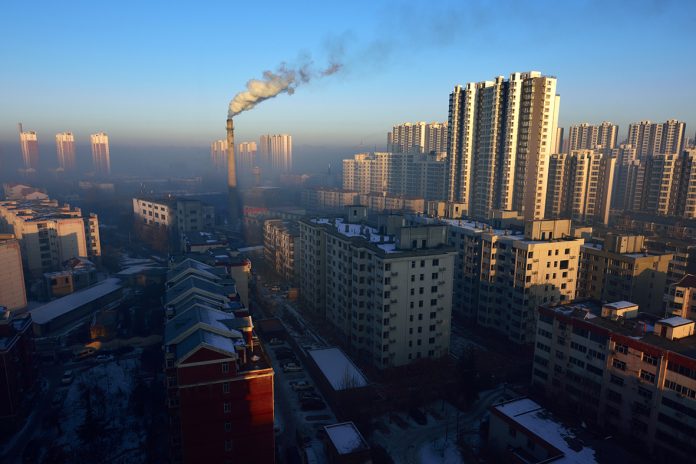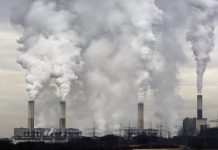
Urgent action is needed on air pollution, says OECD Environment Director Simon Upton, particularly in coal-reliant economies like China and India…
Air pollution takes years off people’s lives. It causes pain and suffering through lung and heart diseases. It harms food crops and suppresses agricultural output in a world with a growing population.
We generally evaluate the cost of air pollution by looking at the economic impact of reduced labour productivity, higher medical expenses and lower farm output. Economic jargon turns the pain of sickness and premature death into the “disutility of illness”. But heavy as they are, even the dollar figures do not reflect the totality of what air pollution costs us.
Both outdoor and indoor air pollution matter. For the poorest families, indoor smog from coal or dung-fired cooking stoves can be the more serious problem. As economies develop and start to electrify, motorise and urbanise, outdoor air pollution becomes the bigger issue. Clean technology can help but policy calculations tend to focus myopically on the costs of action, while ignoring the much larger costs of inaction.
Particulate matter particular problem
OECD projections suggest that the costs of inaction will be severe in the coming decades. Economic growth and rising energy demand mean a steady rise in emissions of air pollutants and rapidly rising concentrations of particulate matter (PM) and ozone, especially in China and India.
A new OECD report on The Economic Consequences of Outdoor Air Pollution estimates that outdoor air pollution will cause 6-9 million premature deaths every year by 2060, up from 3 million in 2010. That is equivalent to a person dying every 4-5 seconds. There will also be more pollution-related sickness. By 2060, 3.75 billion working days a year could be lost due to illness from dirty air. The direct market impacts of this pollution, in terms of lower worker productivity, higher health spending and lower crop yields, could exceed 1% of GDP annually by 2060, or $2.6 trillion.
But measuring the impact of air pollution purely in terms of GDP is too limited. Premature deaths from breathing in small particles and toxic gases, and the pain and suffering caused by respiratory and cardiovascular diseases do not have a market price. Nor does foul smelling air or not being able to let your child play outside without a face mask. These burdens weigh far more severely on people than anything we can measure as costs to the economy.
China and India will be badly hit
Our projection for the rise in premature deaths from outdoor air pollution means that, cumulatively, more than 200 million people will die prematurely in the next 45 years. The most affected regions will be those with densely populated areas with high PM concentration levels, especially cities in China and India. In per capita terms, mortality is also set to be very high in Eastern Europe, the Caucasus region and other parts of Asia, such as Korea, where ageing populations mean more people are highly vulnerable to air pollution.
The number of people with acute or chronic illnesses will be a multiple of that. New cases of bronchitis in children aged 6 to 12 are forecast to leap from 12 million today to 36 million a year by 2060. For adults, we predict 10 million new cases a year by 2060, up from 3.5 million today. Children are also being increasingly affected by asthma. All this will translate into more pollution-related hospital admissions, projected to rise to 11 million in 2060 from 3.6 million in 2010.
Not surprisingly, when asked how much they would be willing to pay in order to reduce these health risks people are very clear in their replies. Examining the myriad studies conducted by economists to put a price tag on this, the OECD has found that on average individuals would be prepared to pay around $30 to reduce their annual risk of dying prematurely by 1 in 100,000.
Bringing hidden costs into the open
Well-established techniques have been developed to convert these “willingness-to-pay” numbers into an overall value of premature deaths caused by outdoor air pollution, as illustrated for example in the OECD Mortality Risk Valuation in Environment, Health and Transport Policies.
The results are staggering. Based on these “willingness -to- pay” values, the global cost of premature deaths caused by outdoor air pollution would reach $18-25 trillion a year by 2060. Arguably, this is not “real” money as these costs are not related to any market transactions. But it does reflect the very real value people put on their lives – and the value they would put on policies that would reduce the risk to their lives from air pollution. To say that only market transactions have value to citizens would be perverse.
Both GDP losses and the reduced quality and length of lives matter. Reducing air pollution can enhance both market and non-market values. The combined case for action is overwhelming. But citizens cannot act alone on a massive problem like air pollution. They need governments to act on their behalf. And that means bringing the hidden costs of air pollution out into the open.
Simon Upton
Environment Director
OECD










